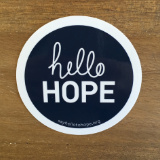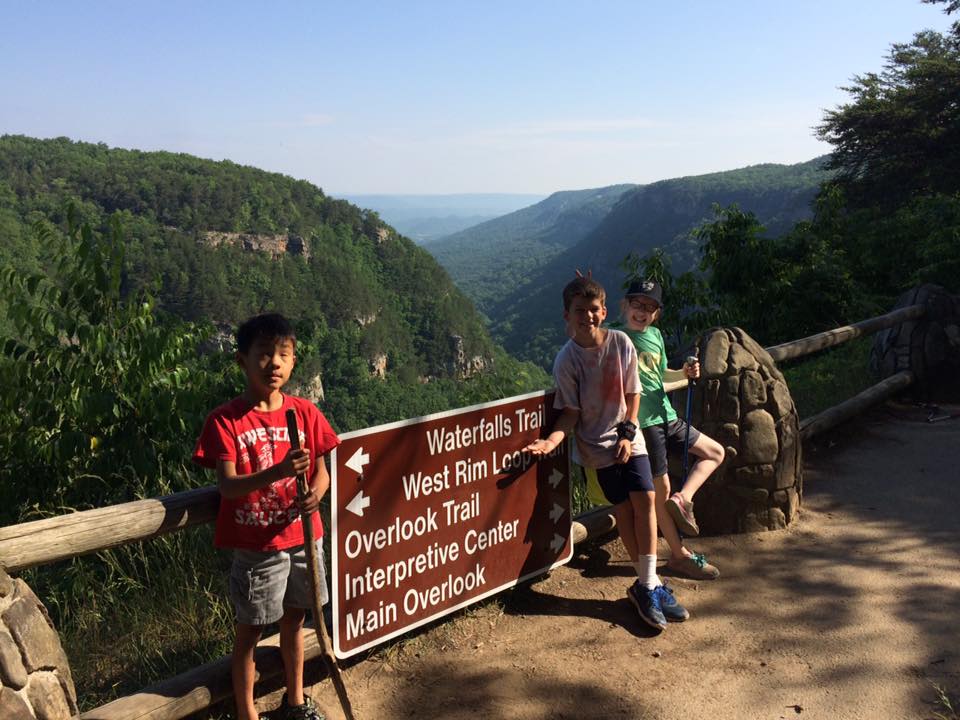Albinism and Visual Impairment: Kate and Charlie’s Story of Hope
We met the Seabolts last summer, just before they brought their son, Charlie, home from China. Since then, it has been so inspiring to watch the way that they have truly created a family culture of adventure, hope, perseverance, and laughter. We love this family and are so honored to share their story with you.
Stephen and Dawn are college sweethearts who have had adoption on their hearts since their dating days. After getting married, they felt strongly led to adopt from China but discovered that they had to be 30 years old in order to do so. Knowing they had to wait for adoption, they had their first biological child, Sam, and basked in his first year. When they both turned 30, Dawn and Stephen started the process of filling out paperwork to adopt from China, fully expecting that Sam and their adopted child would be just a year or two apart in age.
They told the adoption agency that they wanted a girl, thinking that adopting girls was the biggest need. A few months into the process, though, their social worker informed them that their wait for a child was growing. What was once anticipated to be a 2 year process was turning into a 4 year process, maybe longer. But the social worker did say that if they were open to special needs, they could bring home a child in as little as six months.
Feeling unequipped to handle a child with special needs, Dawn asked the social worker to send over a new list of waiting children so she could see what the specific diagnoses were. As her eyes scanned the list, Dawn looked for a child that was the same age or younger than Sam. On that list was their now daughter, Kate, who has albinism. After inquiring about Kate, they learned that in addition to having blond hair and fair skin, she had some visual impairment, common to people with albinism. Kate was also diagnosed with nystagmus, a condition in which the eyes move repetitively from side to side.
Dawn and Stephen did their research and talked with an ophthalmologist about what to expect and how to plan for Kate’s visual impairment. They felt comfortable with the information given to them and filed their intent to adopt. Within 6 months, they traveled to China to bring three year old Kate home.
Adjusting to Life with Albinism
Once Kate came home, they began to discover what life with albinism would be like and what specific extra support Kate would need. In the first year, they worked on adjusting to life as a family of four, but a year after bringing Kate home, they were still having a hard time understanding her. Dawn called the county to have her evaluated for early intervention, thinking she needed speech services, but the county asked Dawn to have Kate’s hearing tested first. The hearing test results came back, and they were shocked to discover that Kate has moderate hearing loss. Within one month of using hearing aids, her parents were able to understand her, and her English improved dramatically.
During that early intervention process, Dawn was also told by the county that Kate needed to start vision services. She didn’t have any significant delays, but they wanted to get her started in a pre-K program for visually impaired children. This experience opened a new world and a new set of introductions for the Seabolts that broadened their perspective and brought them tremendous encouragement. Dawn raved about the services from their county saying, “They introduced us to Mr. Aikens and Ms. Anderson, two blind adults that are completely independent, awesome, and successful people. We realized that it’s not that big of a deal to be blind or visually impaired.”
The impact of Kate’s teachers was incredible for Kate, but it also shaped the way that Dawn and Stephen viewed adoption.
Opening Up to a Second Adoption
Their experience of being able to handle — even thrive as a family — despite Kate’s diagnosis was transformative. Here’s how Dawn describes it: “Because of Kate, we realized we could handle the vision impairment. We felt equipped and empowered by our community.”
This realization, combined with the great need for adoption of children with special needs from China, was working on their hearts. Dawn explained, “I have a heart for the orphans of the world. In China, blindness is viewed as a curse, and almost no blind child is kept. The more research I did, I realized that 75 percent of the waiting children in China are boys, and most of the blind children in China are orphans.”
After spending a couple of years in prayer about opening their home once more, they began the adoption process again, this time knowing they wanted a boy with blindness or visual impairment.
Their desire was realized, and the Seabolts adopted Charlie last year at the age of 7. Charlie has Peter’s Anomaly, a blanket diagnosis given to children that have a number of problems in the front of their eye. In Charlie’s case, his eyes never fully developed, causing his corneas to be cloudy, his lens and cornea to adhere to each other, and cataracts to develop. Describing his level of blindness has been tricky. Dawn explained, “When people ask if he’s blind, I tell them that he’s functionally blind. If I say, ‘no,’ they expect that he can see a lot more than he can. Yet, if I tell them he’s totally blind, then they inevitably ask, ‘Well how does he see that pink shirt?’ He’s functionally blind: he can see color, and he can see shapes. But, if you and I were standing two feet from him, and we didn’t speak, he couldn’t find me. But in our house or even at school, if he’s in a familiar situation, he’s very confident.”
Raising Children with Blindness
The Seabolts have found a variety of ways to embrace a hope-filled and empowering life, despite the diagnoses they face. While the list seems long, including albinism, nystagmus, dyslexia, Peter’s Anomaly, and ADHD, they simply don’t define or limit themselves by any of these words.
They sought out and joined organizations like the National Federation of the Blind and Georgia Blind Sports, and the reality is that Kate and Charlie have an amazing quality of life and an incredible set of opportunities in front of them.
Kate and Charlie are both super adventurous and welcome new experiences, which has made family adventures that much more enjoyable. Additionally, Kate is so beautiful and is incredibly compassionate. She has been obsessed with civil rights and politics since she was 4 and exudes so much ambition. From my interactions with her, I admire her so much! Charlie is energetic, sweet, and incredibly smart, learning English in just 2 months. His memory is phenomenal, and his fearlessness and natural curiosity endear him to everyone he meets. Dawn and Stephen empower and encourage Kate and Charlie to pursue their passions and strengths.
At school, Kate and Charlie have a support group with the other students who are blind or visually impaired. They are able to talk about what was hard from the week, victories they had, and practice social skills. Knowing that Kate aspires to be a lawyer one day, their teacher brought in a lawyer who is blind to share her story and inspire the students. At home, Dawn and Stephen continue to expose Kate and Charlie to stories of successful people who are blind, deaf, or dyslexic.
Reflecting on their life with medical challenges, Stephen commented, “In the beginning, when we were first exploring adopting Kate, her diagnosis seemed fairly overwhelming. The part of the story that’s interesting is how we gradually became comfortable with more and more. She’s a braille reader, has moderate hearing loss, and has dyslexia. But we unpacked those things one at a time. Through Kate, we were introduced into this world of the blind and visually impaired and met some really inspiring people. We realized that it was not a curse or a death sentence. That led us to be open to Charlie. Charlie has much less vision than Kate. He is also a braille reader and has ADHD. People think the blindness is the overall challenge, but the kids are able to navigate through that. Charlie’s biggest challenge in the last year has been his adjustment from seven years in an institution to a family.”
Daily Hope with Blindness
One of the challenging aspects of raising children with visual impairments has been the response from those in our culture who view blindness as a curse. They do receive stares out in public, particularly when Kate or Charlie have their canes with them. Dawn got them t-shirts, which I love. Charlie’s says, “Bears are scary, blindness isn’t,” and Kate’s says, “Keep calm, it’s just a cane.” :)
They try to keep lighthearted attitudes and let any negativity roll off their back, but there are times when it hasn’t been as easy. Stephen recounted one such time, “One day I was at Six Flags with the kids, and a middle school boy — who had noticed the canes — came up and asked to pray for our children. I said, ‘Sure you can,’ but I was wondering if he was going to pray for healing for them. It was a weird dynamic because obviously I didn’t want to say, ‘No, you can’t pray for them!’ But I also didn’t want Kate and Charlie to feel like they were a leper and wonder why they needed extra prayers for healing. In talking with our other friends who are blind, we have learned that it’s quite common for people to ask if they can pray for you. It’s a difficult thing to wrangle through. We always say genuinely that we feel we’re the fortunate ones to have Kate and Charlie in our family. We’ve learned so much and grown so much.”
One of the things that stands out about the Seabolts is the way that they truly focus on cultivating a family culture that is full of joy and values each person for who they are. Rather than focusing on what they can’t do, they find activities that they can all do together. From adaptive sports like tethered kayaking and tandem biking to a general environment of love and support, Dawn and Stephen’s investment in their family has resulted in family-wide teamwork and solid, strong memories.
Another factor in their family dynamic has been Sam’s compassion, which Stephen commented on multiple times. Dawn agreed, “Because he’s always known this life, Sam is so in tune to the other two. If they can’t see, he picks up on it sometimes before I do! Sam really is a good sibling to them. I read once that if you’re wondering how to act around a child with special needs, just watch their sibling. Our family dynamic has given all of our children more compassion for others.”
We absolutely love the commitment to care for each other and the hope-filled environment that Dawn and Stephen have nurtured in their home. Describing hope, Dawn said this: “You can hope for things for your children, but the only hope that we can be confident in and guarantee is that we have Jesus. That’s the only thing you can truly put your hope in. It’s a wild and crazy way to choose to live your life, but it’s very rewarding. I don’t think people realize how truly these kids will change your world. They have changed not only our home, but our worldview, too.”
For more information about resources and activities for the visually impaired, you can check out the National Federation for the Blind, the Center for the Visually Impaired (CVI), or Georgia Blind Sports.
Loading...



















